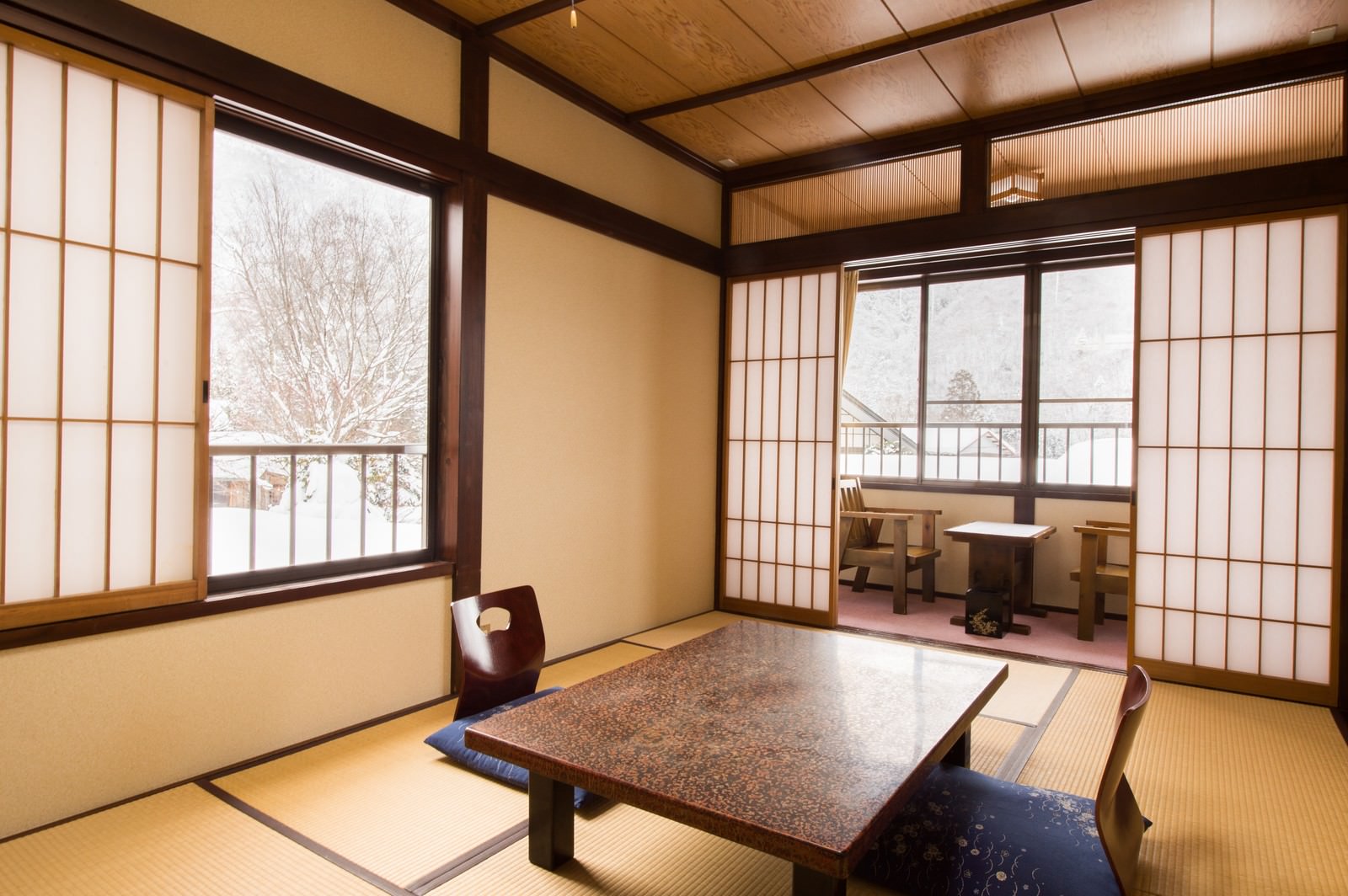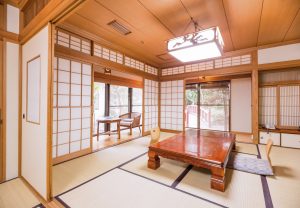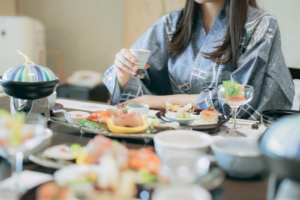Japanese ryokans are places where you can experience traditional Japanese culture. You can sleep on tatami mats (畳), enjoy onsen (温泉, hot springs), and taste seasonal kaiseki meals (懐石料理)—experiencing the hospitality unique to Japan. If this is your first time travelling to Japan, there may be many unfamiliar things in the ryokan room, so knowing about them in advance can help you enjoy your stay even more.
There are around 80,000 ryokans in Japan, and about 1,200 of them are members of the Japan Ryokan Association (www.ryokan.or.jp), offering high-quality services. Ryokans come in various types, from luxurious ones offering rooms with private outdoor baths to smaller ones where you can experience local life in a homely atmosphere. The prices vary depending on the location, service, facilities, and food, so you can choose one based on the purpose of your trip.
What to Expect in a Japanese Ryokan Room
Ryokan rooms vary depending on the room size and amenities. In addition to the typical Japanese-style room (和室, washitsu), there are rooms with private outdoor baths, rooms with special views, and even rooms designed for families or couples, and recently, rooms for solo travellers. You can select the ideal room based on your travel purpose.
Ryokan rooms typically feature tatami mats on the floor, where you sleep on a futon (布団). In the centre of the room, there is often a zataku (座卓, low table) with zabuton (座布団, seating cushions) or zaisu (座椅子, low chairs) around it. Some rooms may have private onsen or outdoor baths (露天風呂).
Let’s look at the details of what is usually found in the room.
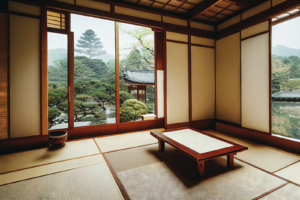
Tatami
Tatami (畳) is a traditional Japanese flooring material. It is usually rectangular, with a surface woven from igusa (イグサ, rush grass) and filled with straw inside. Tatami mats have cloth borders called “tatami-beri (畳縁),” but some tatami mats do not have borders. One tatami mat is called “one-jou (1畳),” which is roughly 1.8 square meters and is used as a unit of area. The unique smell of tatami and its natural color can have a relaxing effect. For me, it’s one of the most comforting scents. While many Japanese people enjoy this scent, some may not.
Rules for Using Tatami
On tatami mats, you should remove your shoes or slippers and walk barefoot or in socks. Since tatami is a delicate material, be careful not to spill food or drinks on it. Also, avoid dragging heavy objects or using sharp items that could damage it.
Are There No Chairs in the Ryokan Room?
Therefore, in a ryokan room, there are generally no chairs like the ones you are familiar with. In many cases, you sit on a ‘zaisu’ (a type of legless chair) with a zabuton (flat cushion) placed on top. This is because you sit at a low position, which matches the height of the traditional low table in a Japanese-style room.
Tea Set
On the table, there is usually a tea set consisting of a kyuusu (急須, tea pot), chaba (茶葉, tea leaves), yunomi (湯呑み, Japanese tea cup), a denki-pot (電気ポット, electric kettle), or a mahou-bin (魔法瓶, thermos), and wagashi (和菓子) or chagashi (茶菓子)(traditional Japanese sweets).
Sometimes, the staff who guide you to the room may prepare the tea for you, but if you make it yourself, it’s similar to brewing tea in the West. If there are tea bags, it’s simple. Besides green tea, there may also be hojicha (ほうじ茶, roasted green tea) or oolong tea, but these are generally consumed without sugar, so they may taste a little bitter.
What if There Is No Tea Set?
If you don’t see a tea set, look for a container called “chabitsu (茶櫃).” This is typically a round, lidded wooden container used to store and carry teapots and cups. Many ryokans place this container in the room.
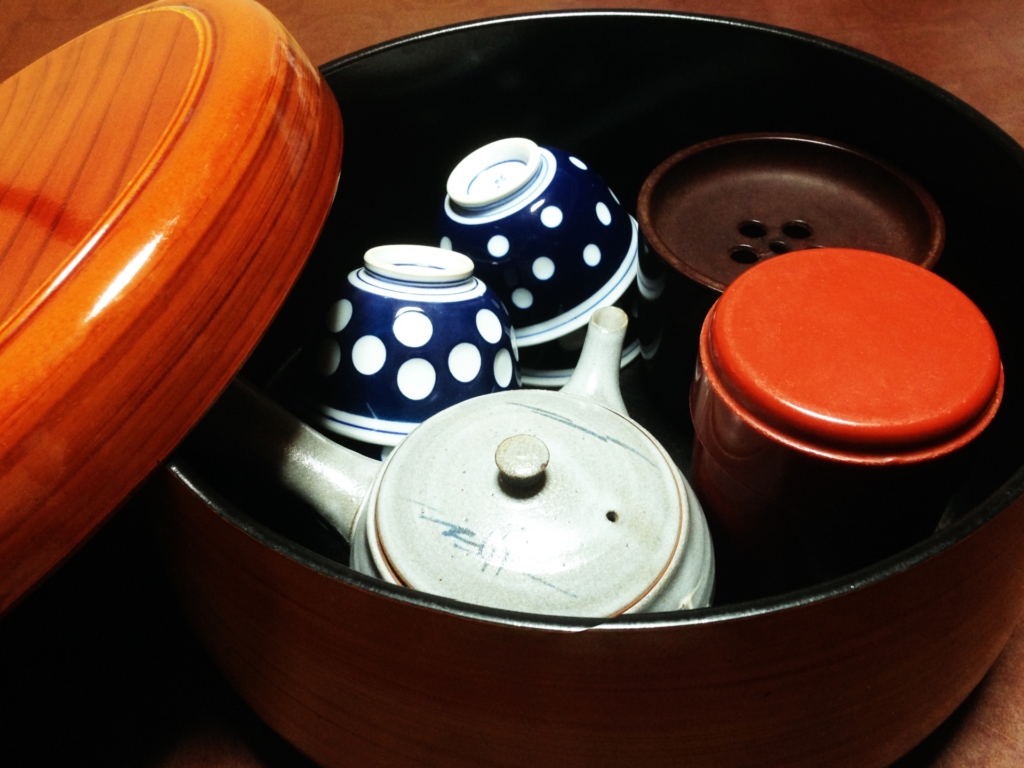
What Are the Tea Sweets on the Table?
Tea sweets placed on the table in the room are usually light snacks such as Japanese sweets or rice crackers, which are provided to enjoy with tea. Some ryokans offer local specialties as tea sweets, so be sure to try them. If you like them, you can often purchase them at the ryokan’s souvenir shop.
Tokonoma
The “tokonoma (床の間)” is a special alcove in the room where items like kakejiku (掛け軸, hanging scrolls), flowers, seasonal decorations, pottery, and crafts are displayed. It enhances the beauty of the room and creates an elegant atmosphere. Therefore, avoid placing your luggage or entering there.
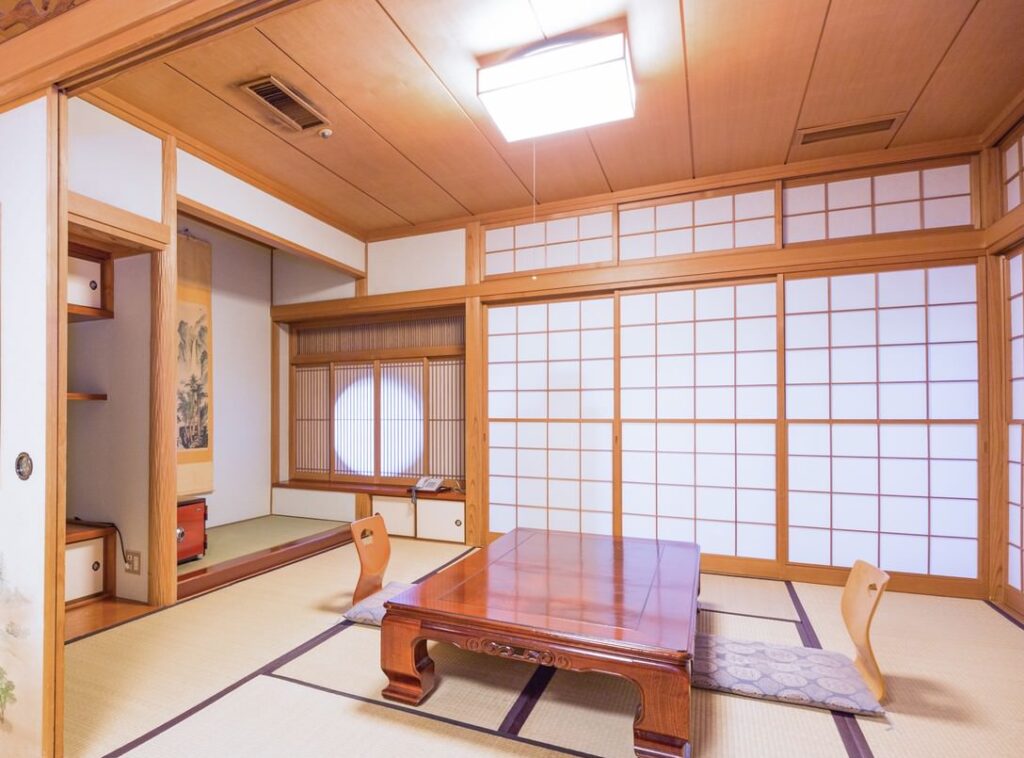
Closet with Sliding Doors
The “oshiire (押し入れ)” is a storage space commonly found in washitsu rooms, used for storing futons, bedding, and clothing. The oshiire is separated by sliding doors called “fusuma (襖),” which allow you to open and close it easily. Ryokan rooms typically store futons in the closet (described in the next section).
Where Is My Bed?
Ryokan rooms generally don’t have beds (though some ryokans may have rooms with beds). When it’s time to sleep, the futon (布団), which is stored in the oshiire, is laid out on the tatami mat. The futon consists of a sleeping mat (shikibuton) and a blanket (kakebuton). Typically, the staff will lay out the futon for you during dinner, but it may already be laid out depending on your arrival time. In the morning, the staff will come to put away the futon, so the room’s atmosphere changes between day and night.
Nowadays, some ryokans keep the futon laid out throughout the stay.
TV, Air Conditioning, Wi-Fi
Most rooms come equipped with a TV, air conditioning (or heater), and Wi-Fi. Most rooms also have a phone, typically used for contacting the front desk or for calls within Japan. If you need to make an international call, check the guide in your room or ask the front desk about how to do so and the costs. These days, with Wi-Fi available, it’s easy to stay in touch with friends abroad.
Rooms with Private Onsen
A room with a private onsen or outdoor bath is a room where you can enjoy the hot spring without sharing it with other guests. These rooms are often located in areas with beautiful views, allowing you to enjoy nature while bathing, making them a popular choice for those seeking a tranquil experience. Although the price is higher, they are an attractive option for those looking for a special experience.
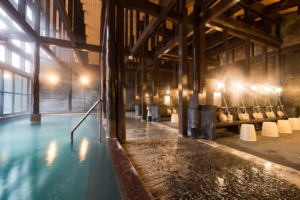
Room Bathroom
Most guest rooms have a bathroom with a sink and a bathtub (or shower). If the toilet has special slippers, be sure to wear them only in the bathroom and not on the tatami mats.
What is a Yukata?
A yukata is a traditional, lightweight kimono, commonly worn in summer or provided in ryokans. The yukata provided in ryokans can be worn when walking around in the ryokan or the surrounding hot spring area.
Typically made of cotton, the yukata is tied with an obi (belt). It’s well-ventilated, making it suitable for wearing after an onsen or bath. It can also be worn as sleepwear or while dining in the ryokan without being considered inappropriate (many guests wear it for breakfast as well). Yukata are often provided in the room, and if the size doesn’t fit, you can request a different size at the front desk.
Should I Change into a Yukata Before Going to the Public Bath?
This is a personal choice. For me, if possible, I prefer to change into a yukata before going to the onsen/public bath. It makes it easier to change in the changing room, and there’s less to carry back to the room. After bathing, it’s often warm, so wearing a yukata is comfortable.
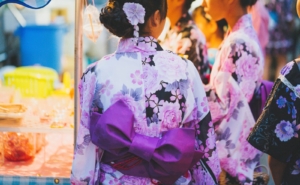
Stay Quiet at the Ryokan
Large noises should be avoided in the room. Since sound tends to carry to the neighboring rooms, it is ideal to keep the noise level down and maintain a quiet atmosphere during your stay.
What Should I Do with Laundry?
Ryokans vary, but some offer guest laundry facilities, while others only provide laundry services at the front desk. If you leave your laundry, it will usually be ready at the specified time, making it convenient for long stays or consecutive nights. It’s a good idea to check with the ryokan in advance.
